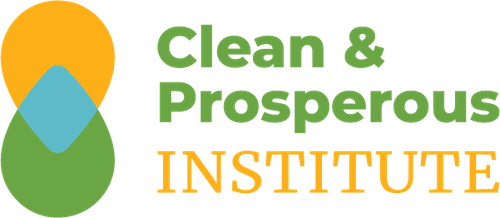More lessons from California
In late June, Clean & Prosperous Institute led our second study mission to California, with 45 participants representing state and local governments, large and small businesses, and climate action advocates — from Washington state and California. So much actionable information was learned from briefings and site tours, we want to continue sharing highlights with you here. (If you missed Lesson #1, about dairy digesters, click HERE.)
What we learned
We learned that air quality is improving in overburdened California communities because Cap-and-Trade revenues are being wisely invested and carefully monitored, delivering results that benefit everyone. Especially communities of color and disadvantaged communities that are three times more likely to suffer the effects of deadly GHG emissions.
Real results, recently reported: A February analysis by California’s Office of Environmental Health Hazard Assessment (OEHHA) titled, “Benefits and Impacts of Greenhouse Gas Limits on Disadvantaged Communities” shows that reduced emissions driven by California’s Cap-and-Trade program have major health benefits, including a reduction in premature pollution-related deaths.
Accelerating the transition away from fossil fuels in the Medium-and-Heavy Duty Vehicle sector (M/HDV) is a central focus of California’s climate investments using Cap-and-Trade revenue. These investments show up in the air quality data reported by the OEHHA.
During our California trip, we heard from California Air Resources Board (CARB) and California Energy Commission (CEC) leadership about investments in Low Carbon Transportation programs — programs that could be considered for implementation in Washington state:
- The Hybrid and Zero-emissions Truck and Bus Voucher Program (HVIP)
California is especially pleased with the success of HVIP. The program works to support private innovation and grow the green economy by funding such projects as: zero-emission drayage truck incentives, a rural school bus pilot project, incentives for small trucking fleets and independent owner operators, Clean Cars 4 All (a program that uses incentives to help lower-income consumers living in and near disadvantaged communities replace their old higher-polluting vehicles with newer and cleaner transportation), and many others.

- The Clean Transportation Program Investment Plan
California supports innovations in a broad portfolio of transportation and fuel technologies that help meet its energy, clean air, and climate change goals. The program invests up to $100 million annually, leveraging public and private investments to accelerate the development of clean, efficient, low-carbon technologies to reduce greenhouse gas emissions and petroleum dependence. The latest investment plan update includes deployment of accelerated charging and hydrogen fueling stations, in-state ZEV-related manufacturing, cross-agency coordination through the Zero-Emissions Infrastructure Plan (ZIP), and measures to ensure that investments benefit disadvantaged communities.

- The Community Air Protection Program (CAPP)
Passed in 2017, CAPP established enhanced emissions reporting, air monitoring, and emissions reduction requirements. The program works to reduce pollution exposure in communities prioritized by environmental, health and socio-economic information.

What we can do in Washington
The public-private partnerships promoted by California’s HVIP, Clean Transportation, and Community Air Protection programs are a model for Washington to follow. Real-world data shows that state-funded incentives really do work and help the private sector to speed commercialization and clean the air in communities that need it most. Washington can implement these types of programs with Cap-and-Invest revenues. We have identified several high-potential opportunities for decarbonizing transportation in Washington state, and published our analyses in this report, Washington’s Decisive Decade: An Emerging Roadmap for Transportation Decarbonization & Cleaner Air.
We have joined California’s zero-emission vehicle (ZEV) and advanced clean truck (ACT) requirements for new trucks, amplifying a market signal that already spurs companies like PACCAR-Kenworth to build electric heavy-duty trucks in our state. In fact, one of the most fascinating tours of this trip was at PACCAR’s Innovation Center in Silicon Valley, where we saw first-hand the next-generation research and emerging technologies that will benefit future vehicle performance. PACCAR’s Innovation Center is also accelerating development of electric and hydrogen fuel cell powertrains, as well as the deployment of big data analytics.
With the revenue raised by the Climate Commitment Act, such as that with targeted allocation in the new Move Forward Washington transportation package, the state can lead significant, near-term decreases in local air pollution and GHGs while accelerating the shift towards clean vehicles. As of now, only a small portion of the Move Forward Washington funds are clearly allocated for heavy-duty ZEV vehicles. More emphasis on accelerating the transition away from fossil fuels in the Medium-and-Heavy Duty Vehicle sector would be a win-win for the health of our most disadvantaged communities and for our economy.

